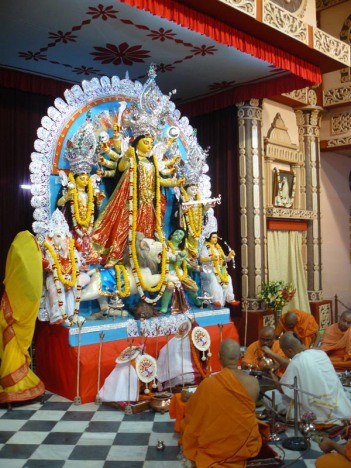Last month has been truly hectic and tiresome. I had to complete a few project and meeting reports, start on a few new projects that required travelling to villages and districts and my daughter had her school exams. It was more stressful to be around a nine-year old unable to sleep at night and constantly reminding herself of revising essays on topics such as International Women’s Day (which I am sure, she doesn’t fully comprehend anyways). I am not sure what our education system has come to, should children be subjected to stressful exams, memorized speeches on topics that are alien to them? A few of my friends have opted for more unconventional schools with novel methods of teaching, more similar to programmes that ran in ancient India, where children were taught more by observing nature instead of chapters to memorize. I have often thought of letting my daughter be in one of those schools instead of the one she is presently at. I have to find the time to do some school research too.
At one point during our tiresome week, we were both too fatigued with work, home and studies. One evening, I just gave up and sat with her doing nothing. We listened to soothing music, danced around with Tina Charles and ate a warm plate of ketchupy, spicy, egg fried rice. We did have a great sleep that night and promised ourselves to do this more often.
I also thought about the women public figures in my life who have lifted my spirits so many times. It’s not just singers like Kaushiki Chakravarty, Tina Charles but my chef heros like Julia Child and Manngchi, authors like Carol Shields, Julia Glass, Mahashweta Devi and Maitreyi Devi, fictional female leads like Ms Phryne Fisher and wonderful directors like Aparna Sen and The Wachowskis. These women have helped me focus on more important and productive things in my life and move on from things that do not require my time and attention. More importantly, like my closest women best friends, the above women have helped me laugh and be calm at times when I did not have much to look forward to.
Along with these women, fortunately, my work has provided me opportunities to observe strong women who are based in some of the poorest communities where most have never experienced necessities like clean water and hygienic sanitation. I have met some of the strongest women in these communities who inspite of everything, relentlessly pursue every avenue to keep their communities healthy and well informed. It is not the meagre salary that these front line health workers get for their job (ASHAs), but the tremendous respect that they obtain from their neighbors, peers and elders that keeps them going.
One of the greatest feminine strength is perhaps the capability to nurture and care. I have seen it amply not only in the women in my family and network, but also in the men in my life. The men in my family have always stood like pillars in support of every member. Many of my male teachers, supervisors and colleagues were extremely supportive to my growth and learning. On March 8th, the Director of the Institute where I work held a special tea meeting in commemoration of women colleagues. We were asked to speak on the moment when we felt empowered to be 21st century women in India. My reflections were that I have never faced a divide between man and woman while growing up, in my adulthood nor in my career up till now. I have never felt that I was denied anything because of my sex. Isn’t that empowering in itself? Maybe I am the fortunate few, but I wish my daughter and every daughter in India has the same experience too with their life.
The only real stumbling block is fear of failure. In cooking (like everything else in life) you’ve got to have a what-the-hell attitude. Life itself is the proper binge – Julia Child




 During my school days, for the five main days of Puja, children performed cultural programmes every evening. SB, our community mentor would recruit us early, during the school summer vacation itself and start coaching us for these programmes in October. I am yet to come across someone as versatile as SB, having a day job as a Statistician in a National Research Center, SB was immensely talented in playing the flute and equally gifted in writing scripts for plays and musicals. After coming home from school, we used to rush to SBs house for the rehearsals. He helped us build camaraderie and made my childhood so much fun. For one hour of practice, SB gave us each a lemon candy, entirely from his own funds.
During my school days, for the five main days of Puja, children performed cultural programmes every evening. SB, our community mentor would recruit us early, during the school summer vacation itself and start coaching us for these programmes in October. I am yet to come across someone as versatile as SB, having a day job as a Statistician in a National Research Center, SB was immensely talented in playing the flute and equally gifted in writing scripts for plays and musicals. After coming home from school, we used to rush to SBs house for the rehearsals. He helped us build camaraderie and made my childhood so much fun. For one hour of practice, SB gave us each a lemon candy, entirely from his own funds.